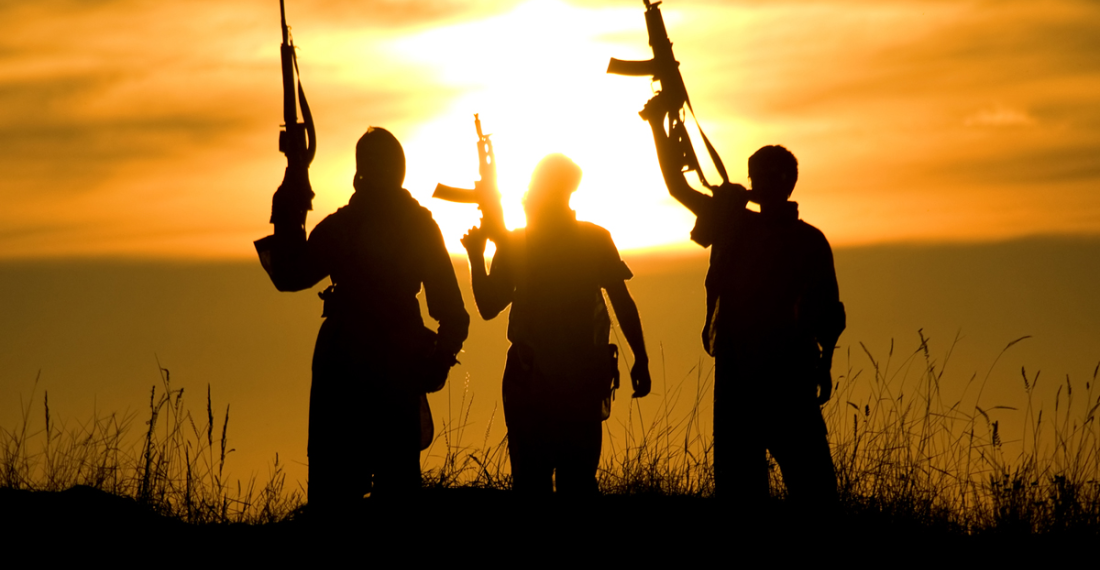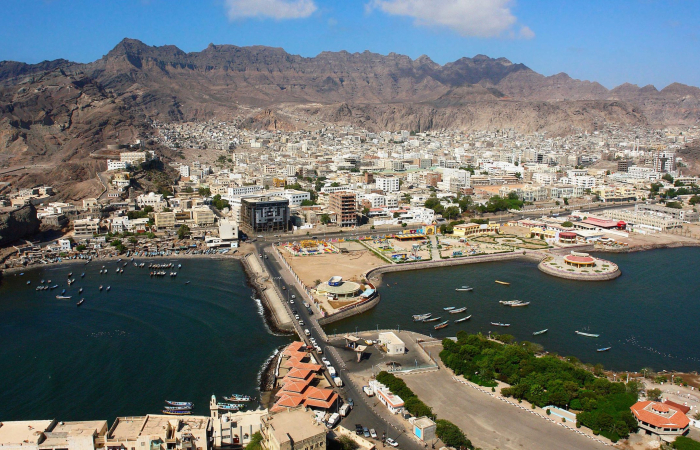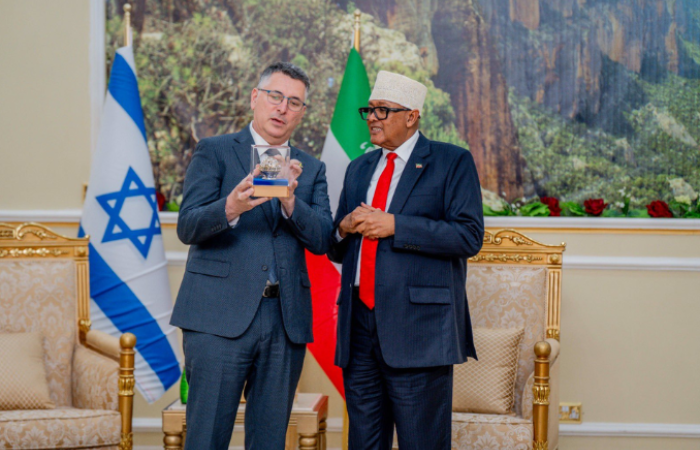"Increasingly, the benefits in combining the spheres of traditional conflict resolution practices with preventing and countering violent extremism are clear and already in place elsewhere," writes Onnik James Krikorian for commonspace.eu. "Given the potential for violent extremist groups to capitalise on and exploit traditional conflicts, as has happened in the Balkans where traditional conflict narratives have been used by Islamists and the far-right, it would seem opportune to factor this into conflict resolution practice in the South Caucasus too."
Nationalist and ultra-nationalist narratives increasingly resemble those disseminated by violent extremist groups. Not only are the themes similar, but so too are the ways in which they are amplified and disseminated online via different platforms. They also target specific demographic groups, but there are few if any attempts to address or counter them, especially in the context of the Armenia-Azerbaijan conflict.
However, lessons and best practices from the world of Preventing and Countering Violent Extremism (P/CVE) sphere could be adapted and used in traditional conflict resolution initiatives. Moreover, while most nationalists are unlikely to become radicalised enough to engage in violence, rather than simply support or rationalise it, there is the possibility that some could.
The precedents are already there.
While most media coverage has mainly focused on Islamist groups such as ISIS and al Qaeda affiliates, they are not the only ones. In 2012, for example, a LGBT-friendly cafe in central Yerevan was firebombed by Armenian ultra-nationalists, reportedly because one of its owners had taken part in a Gay Pride rally in Istanbul, Turkey. Media referred to the culprits as neo-Nazis.
Violent extremism in the South Caucasus
Incidentally, the oldest neo-Nazi group in the post-Soviet era in the region, the anti-semitic Union of Armenian Aryans, was also established in Yerevan in 1993 and claimed to have 18,000 members in 2020. Meanwhile, the first known example of actual terrorism in the region occurred in Azerbaijan with the 1994 Baku metro bombings. More than 90 people were injured and 27 killed in two bomb attacks.
In the 1990s and 2000s, some of Armenia’s Yezidi minority also joined the ranks of the Kurdistan Workers Party (PKK) in Turkey, and there have long been concerns regarding the recruitment of some Muslim citizens of Azerbaijan and Georgia by Islamist violent extremist groups such as ISIS and al Qaeda. In all cases, however, it should be remembered that this is just a tiny fraction of the overall populations.
In the early 1990s, ethnic Armenians in Abkhazia formed the Baghramyan Battalion to fight against Georgia while Afghan mujahideen were enlisted by Azerbaijan in its war with Armenia. And in April 2016, some ethnic Armenians and Azerbaijanis in Georgia also announced that they were assembling informal militia units to fight in the short four-day war in Karabakh.
The same was true during the 2020 war, but because of the Coronavirus pandemic, closed borders made that difficult. Nevertheless, it is believed that a few hundred Georgian citizens of ethnic Armenian descent did go to fight.
Further highlighting how the lines between nationalism and violent extremism are blurred, Armenian ultra-nationalist party Sasna Tsrer took over a police station in Yerevan in July 2016. Three policemen were killed in what was an ultra-nationalist response to speculation that then President Serzh Sargsyan was ready to sign a concessionary peace treaty with Azerbaijan to end the Karabakh conflict.
It was reminiscent of the 27 October 1999 storming of the Armenian National Assembly that saw an armed group assassinate eight senior members of the government and parliament live on air.
One prominent Sasna Tsrer figure, incidentally, is a former member of the Armenian Secret Army for the Liberation of Armenia (ASALA), a Marxist-Leninist ultra-nationalist terrorist group that targeted Turkish diplomats in the 1970s and 1980s. An ASALA bomb also prematurely exploded at a Turkish Airlines desk at a French airport killing five and injuring dozens more.
During the 2020 Karabakh War, some nationalists, especially from the Diaspora, openly called for ASALA to resume operations, not only against Turkish, but also Azerbaijani targets. On 20 January 2021, Armenian news sites and social media accounts carried an announcement, purportedly from ASALA, that the group was considering resuming operations.
It didn’t, but paramilitary groups continue to operate in Armenia.
Militias such as VOMA, for example, recruit locally as well as in the Diaspora. At time of writing, VOMA’s Facebook and Instagram pages are unavailable though it maintains a presence on Youtube and on Telegram where its profile picture depicts Armenia united with Karabakh and the seven regions of Azerbaijan taken back or returned in 2020.
Though sanctioned by the Armenian government, VOMA is increasingly hostile towards the Pashinyan administration. “It is hard to regulate a body which is under and at the same time out of MoD control,” Eurasianet quoted one NGO head as saying. The group’s Facebook posts had highlighted religion and ultra-nationalism as driving ideologies, while openly preparing for a new war.
One security risk assessment published at the end of January 2021 warned that “Armenian informal groups may engage in insurgent-style attacks” on existing and future critical infrastructure. Hopefully, that will not happen, but it is not difficult to imagine the risk of such attacks in the event of unblocking regional trade and communication, especially from Azerbaijan through Armenia to Nakhchivan.
The same might be true for any transportation projects that facilitate Armenian access to European and Russian markets through Turkiye and Azerbaijan. Though hopefully none of these risks become a reality, there should be no room for complacency. The push and pull factors that might lead an at-risk individual into joining a group that adopts radical and even violent action are already there.
Sadly, enabling factors such as combat training and access to weapons are too. But what lessons can be learned from the world of Preventing and Countering Violent Extremism (P/CVE)?
“Violent extremism is a driver of conflict, and violent extremists are often spoilers in peacebuilding efforts.”
In the context of Preventing and Countering Violent Extremism (P/CVE), radicalisation is the process through which individuals adopt extreme ideological, political, or religious beliefs, sometimes leading to support or involvement in acts of violence or other forms of extremist behavior. The term terrorism is a little trickier and politically loaded, so the more generic violent extremism is often used instead.
The FBI defines violent extremism as the "encouraging, condoning, justifying, or supporting the commission of a violent act to achieve political, ideological, religious, social, or economic goals", whilst USAID defines violent extremist activities as the "advocating, engaging in, preparing, or otherwise supporting ideologically motivated or justified violence to further social, economic or political objectives.”
The Organisation for Security and Cooperation in Europe (OSCE) goes a little further, referring to Violent Extremism and Radicalisation that Lead to Terrorism (VERLT). Regardless of definition, what is Preventing and Countering Violent Extremism (P/CVE) and what lessons can be learned in traditional conflict resolution initiatives? And why does it even matter?
“Peacebuilders, through their broader agenda of conflict prevention, also focus on countering extremist violence,” a 2013 report from the United States Institute of Peace (USIP) read. “Violent extremism is a driver of conflict, and violent extremists are often spoilers in peacebuilding efforts. Peacebuilding and CVE work increasingly intersect, though approaches and practice in the two domains often differ.”
The paper sought to bridge the divide and explore the spaces where both interact.
Moreover, it argues that the motivation for someone joining an Islamist extremist or far-right neo-Nazi group are uncannily similar to the reasons why others volunteer to fight in a war or join a militia and similar groups. Contrary to popular opinion, ideology doesn’t necessarily take the most prominent role in this process but instead often serves as a justification for other more immediate and personal motivations.
Indeed, the themes of nationalist and violent extremist narratives are similar. A sense of belonging, sense of purpose, or shared identity among members of the in-group versus the out-group can be central. So too are the socio-psychological traits of an individual at risk as well as a sense of victimhood, real or imagined. These aspects are particularly strong in the context of the Armenia-Azerbaijan conflict.
“[…] Armenian society has many of the characteristics that have proven to be fertile ground for budding far-right movements,” wrote Freedom House in a January 2020 report.” “[…] Furthermore, Armenian national identity is deeply rooted in historical grievances relating to persecution by external enemies, offering a rich material for militant radicalisation.”
Though Azerbaijan is a secular Muslim country, some Islamist extremists have also at various times called for ‘jihad’ in Karabakh. Even if again in a minority and also considered a threat by the Azerbaijani authorities, those Islamist extremists nonetheless still exist. And like violent extremist groups, the allure of embarking on a ‘heroic journey’ reaches far across the Armenian and Azerbaijani border.
Writing in The Conversation in November 2020, Bahar Baser and Élise Féron, two senior researchers, noted that “homeland conflicts can easily be transported to third-party countries – especially when they escalate, as the Nagorno-Karabakh conflict has recently. Tensions between communities can be rekindled within minutes and relations can quickly worsen.”
During skirmishes between Armenia and Azerbaijan in mid-2020, both communities did engage in physical clashes abroad and it should be remembered that both Armenian and Georgian nationalist narratives were found in manifestos written by Norwegian far-right terrorist Anders Breivik and Christchurch mosque shooter Brenton Tarrant.
Georgia has already seen a rise in the number of far-right ultra-nationalist and neo-Nazi groups that threaten social cohesion and have many times ended up in violence and even murder. Sadly, one young Georgian socialist was among Breivik’s 77 victims in his bomb attack in Oslo and massacre on the island of Utoya in July 2011.
If such narratives can affect individuals alien to those two groups then they surely resonate among those in them, even if only a tiny minority. Moreover, far-right Islamophobic hate figures such as Robert Spencer have already used Karabakh to frame the Armenia-Azerbaijan conflict as a battle between Christianity and Islam. Some Azerbaijani lobbyists are reportedly engaging with pro-Zionist evangelicals.
Governments, civil society, and businesses can cooperate in taking down and countering extremist content online
Central to P/CVE practice is countering the dominant narratives spread by violent extremist groups and here the knowledge base is extensive even if the implementation of alternative and counter narratives is often lacking. Nonetheless, the framework and research in this sphere is second to none and offers traditional conflict resolution practitioners a wealth of experience to learn from and adapt.
But that is not to say that the P/CVE sphere is a panacea for the Armenia-Azerbaijan conflict. Indeed, there are just as many lessons to learn, if not more, of what went wrong and why. Indeed, the P/CVE sphere could also learn from the traditional conflict resolution sphere too, and not least because civil society and local messengers are not only on the ground but often more credible than governments.
But there are definitely other lessons to learn. Public-Private Partnerships (PPP) between governments, civil society, and commercial businesses such as Facebook and Twitter to take down or counter extremist content online are just one example and also replicated in attempts to counter misinformation and disinformation in general. The Google Redirect Method is a particular example.
“The Redirect Method is an open-source methodology that uses targeted advertising to connect people searching online for harmful content with constructive alternative messages,” the European Commission explains on its website. And not only has P/CVE pioneered tech solutions to the problem, but it has also successfully used comic books and cartoons to counter extremist narratives.
This could be especially useful when tackling the problem of history textbooks in Armenia and Azerbaijan when it is unlikely that they will change in the near or even mid-term. The P/CVE sphere is also accustomed to taking a whole-of-society approach, including involving religious, community, and youth leaders to prevent radicalisation and extremism among their peers.
Central to P/CVE is the buy-in and involvement of local communities, something that still remains absent in the Armenia-Azerbaijan context. Arguably the only exception to this rule was the short-lived Tekali Process established by the late Armenian peacebuilder, Georgi Vanyan. Rather than restrict peacebuilding to narrow circles of analysts and more politicised civil society activists, everyone was involved, including from the regions of both Armenia and Azerbaijan bordering Georgia.
Increasingly, the benefits in combining the spheres of traditional conflict resolution practices with preventing and countering violent extremism are clear and already in place elsewhere. Given the potential for violent extremist groups to capitalise on and exploit traditional conflicts, as has happened in the Balkans where traditional conflict narratives have been used by Islamists and the far-right, it would seem opportune to factor this into conflict resolution practice in the South Caucasus too.
One first step would be to establish connections, communication, and collaboration between the two spheres. The European Union’s Radicalisation Awareness Network (RAN) might be a good place to start.
source: Onnik James Krikorian is a journalist and consultant from the United Kingdom who has covered the Nagorno Karabakh conflict since 1994. From 2013 to 2019 he also worked consultancy contracts for various international and intergovernmental organisations on Preventing and Countering Violent Extremism (P/CVE).
photo: United Nations Office on Drugs and Crime
The views expressed in opinion pieces and commentaries do not necessarily reflect the position of commonspace.eu or its partners.






